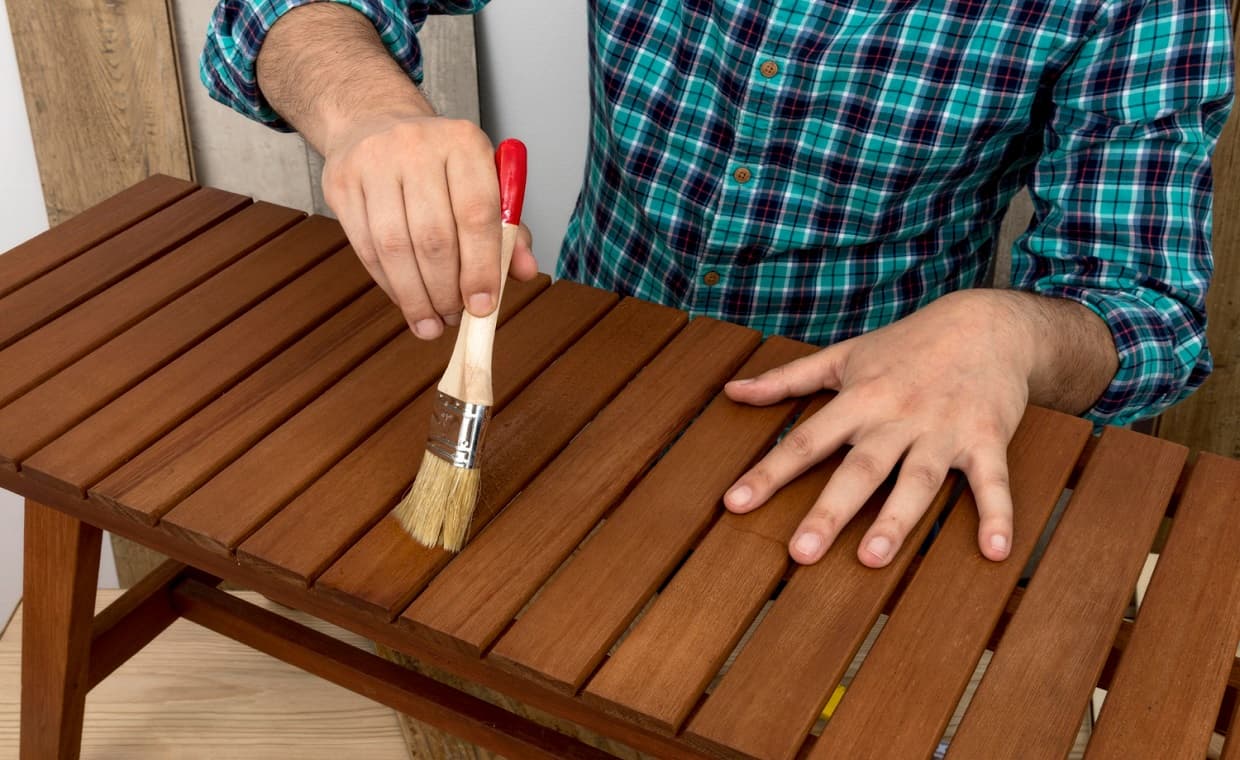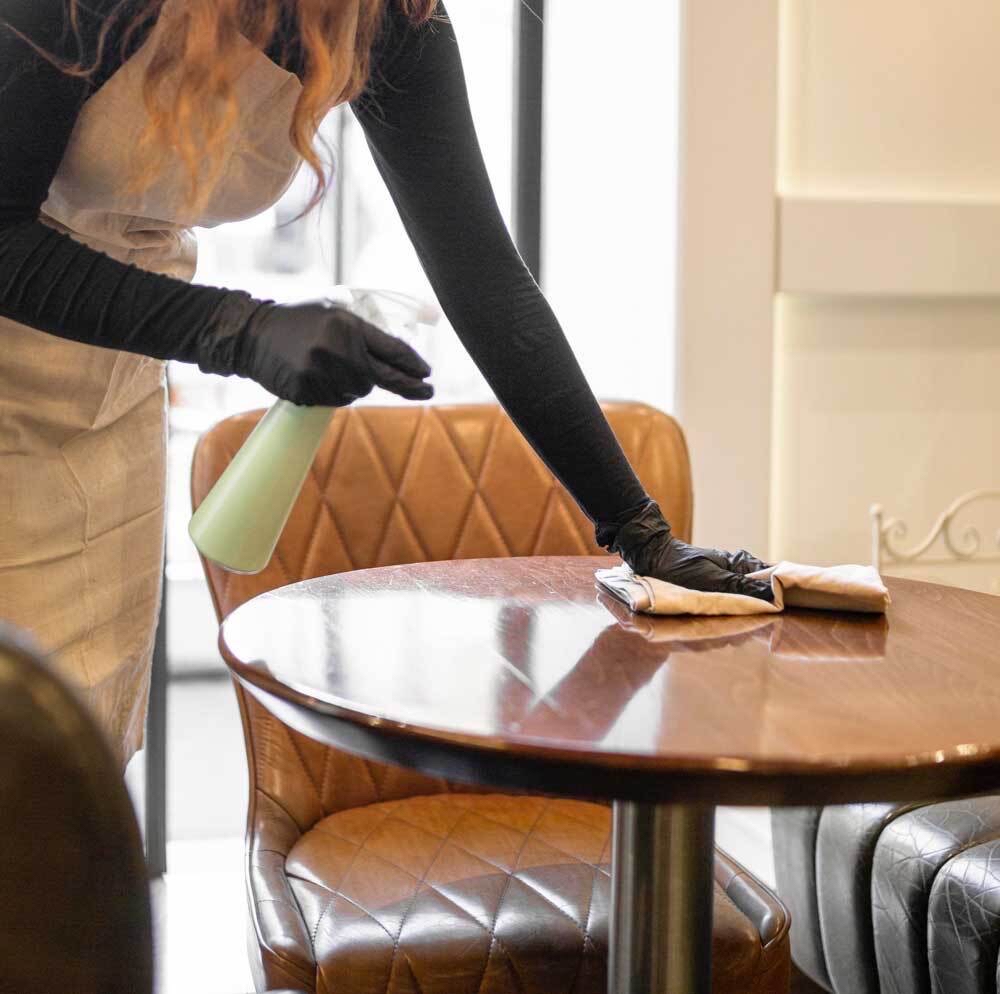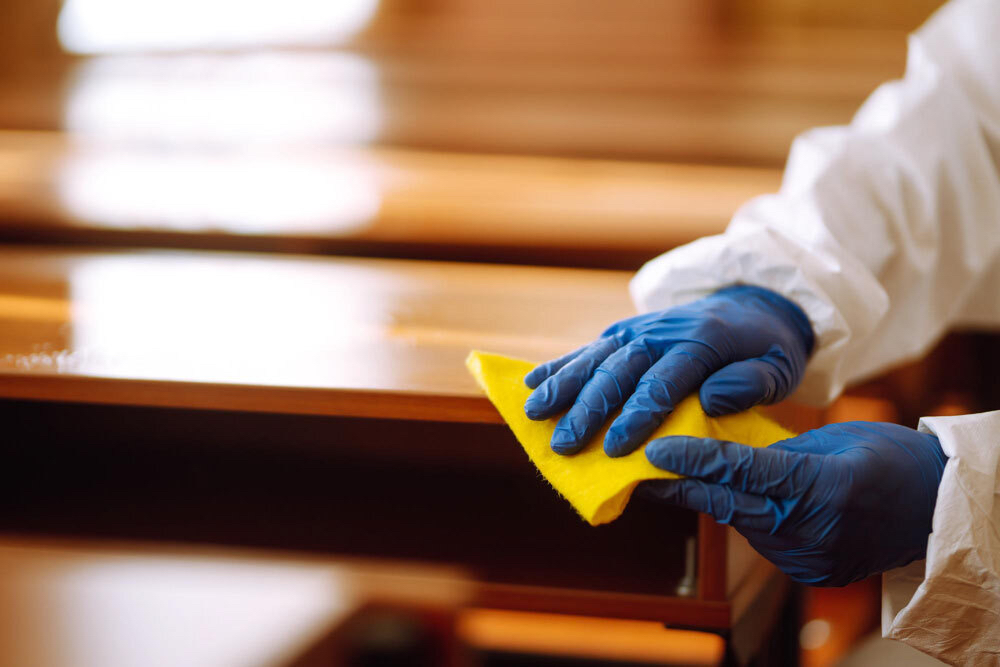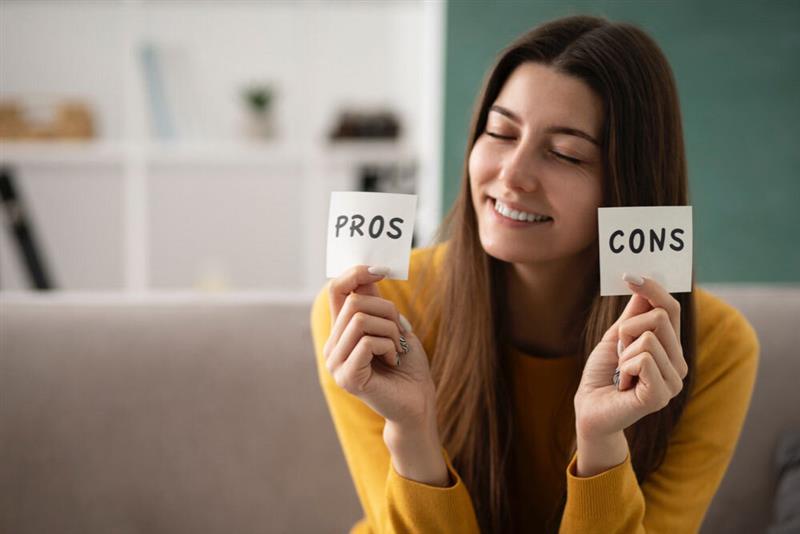
Table of Contents
Quick Summary
- Wood polishing is essential to take good care of wood.
- Wax Polishing is the oldest method, easy to apply, and enhances the natural wood look.
- But wax furniture polishing is not suitable for water or heat exposure.
- French Polishing gives a rich, glossy finish and enhances wooden colour.
- It is ideal for fine, decorative wood pieces.
- French Polishing takes more time and is sensitive to moisture, alcohol, and heat.
- Between the Waxing and French Polishing, the most suitable method depends on the wood type, the intended use of the furniture, and the desired finish.
Waxing and French Polishing are two wood grooming services. These services are used to add a timeless appeal to wooden furniture, so that the furniture look irresistible and truly stunning. While there are different types of wood polishing methods, waxing and French polishing remain the most popular and time-tested options. They boost the aesthetic appeal of wood, and offer a protective layer that preserves its quality.
Waxing and French polishing have been appreciated for centuries as reliable woodcare solutions that combine protection with beauty. However, each method comes with its own set of pros and cons.
If you own wooden furniture or have long cherished the charm of polished wood, this article will provide you with creative insights into two of the most effective wood polishing techniques—waxing and French polishing.
Wood Polishing: Why is It Important for Woodcare?

Before we discuss the process, pros, and cons of waxing and French polishing as two wood polish techniques, it’s important to understand what wood finishing actually means. A wood finish is the final coating applied to a wooden surface to shield it from scratches, moisture, and environmental damage while preserving its appearance, sheen, shine, and durability. Wood polishing gives the surface a refined, finished look.
Wood finishing techniques have been practised for centuries. Traditionally, the polishing and finishing process was carried out using natural products such as oil, wax, and shellac. Later, synthetic products, like polyurethane or lacquer, came into use. Both waxing and French polishing use natural materials and are valued for being entirely handcrafted. These wood care methods are particularly valued for their aesthetic appeal and their facility to enhance the natural texture and grain of wood.
Waxing: The Wood Polish that Adds Natural Touch

Waxing furniture, as the name implies, is one of the oldest wood polishing methods, with wax being the primary ingredient. The process appears simple: a layer of wax is rubbed onto the wooden surface until it begins to show a visible shine and a smooth texture that can be felt to the touch.
Wax polishing on wood is the secret behind the lustrous look of vintage wooden furniture, which is not glossy but immaculately smooth and naturally perfect.
Natural wax is used in this waxing process. Beeswax and Carnauba wax are primarily used in traditional wax polishing methods. However, blended waxes are now commonly used to enhance wood colour, provide a more durable protective layer, and improve the overall durability of the wood.
1. How is the Wax Wood Polishing Done?
The craftsman begins by cleaning the surface. On the clean wooden surface, a small amount of wax is applied using a soft cloth. Once the wax dries, it is rubbed and buffed consistently to achieve a smooth, polished finish.
It’s a labour-intensive and time-consuming process, but when done with care, it results in an excellent wood finish. Wax polish is not apt for outdoor furniture because of their random exposure to heat, heavy traffic, or humidity.
2. Care and Maintenance Tips for Wax Polished Furniture
- Dust regularly with a soft cloth.
- Reapply wax in every 3 – 6 month intervals.
- Avoid placing hot items or wet glasses directly on the surface.
- Use coasters and placemats for added protection.
French Polishing: Timeless Shine, Expertly Refined

French Polishing originated as a speciality in France. However over time, the craft gained global popularity. The uniqueness of the French polishing method is its deep, mirror-like shine. It is a time-consuming and labour-intensive process and it involves applying multiple layers of polish to the wood surface. The multi layers of polish create naturally attractive and long-lasting wooden surface.
Unlike wax polishing, the main ingredient of French Polishing is shellac, a natural resin secreted by lac bugs. Shellac is dissolved in alcohol to prepare the polishing solution. Other materials used in this traditional wood polishing technique include pumice, oil, cotton wool, and cloth. Let’s check now, how to French polish furniture.
1. How the French Wood Polishing is Done?
French polish furniture is is an elaborate, step-by-step process. The first step is to ensure that the wooden surface is smooth, clean, and free of dust. Here’s the detail on how to French polish furniture:
- Prepare the polishing pad: A pad is made by wrapping cotton wool in a soft cloth.
- Apply shellac: The Polishing expert applies thin layers of shellac using the pad in a circular motion. Usually, 20-30 layers are applied to build up a solid, lustrous surface.
- Brushing and finishing: Once the layers are built up, the final step involves burnishing the surface to create a glossy mirror-like shine.
However, French polish is sensitive to water and should not be used on outdoor furniture that is frequently exposed to moisture.
2. Care and Maintenance Tips for French Polished Furniture
- Clean the wood surface with a dry or moderately moist soft cloth.
- Avoid using alcohol-based cleaners or water sprays.
- Polish lightly once or twice a year to maintain the shine.
- Keep furniture away from direct sunlight or extreme humidity.
Wax Polishing & French Polishing: Pros and Cons

Like two sides of a coin, waxing and French polishing methods have their strength and soft nooks. You need to understand both before choosing a wood polishing method for your furniture. Here, we will look into the pros and cons of both methods.
Wax Wood Polishing
1. Pros:
- Quick and easy to apply.
- Improves natural wood grain.
- Low-gloss finish that makes the wood look natural.
- Easy to maintain.
2. Cons:
- Not water-resistant or heat-tolerant.
- Requires frequent reapplication.
- Hardly protects the wood surface from scratches.
French Wood Polishing
1. Pros:
- Excellent glossy finish.
- Enhances wood colour and highlights the grain.
- Ideal for restoring high-end wooden pieces
2. Cons:
- Time-consuming and labour-intensive
- Sensitive to moisture, alcohol, and heat
- Not ideal for furniture in high traffic area.
Wax Polishing & French Polishing: Which is Your Better Pick?

Both waxing furniture and French polishing methods are time-tested formulas for wood care. However, before deciding on a specific wool polishing method, you need to consider a few points.
- Functionality of the furniture: Wax polishing is a better choice if the furniture is for regular use.
- Desired finish: If you are looking for a high-gloss finish, French polishing is the ideal option. Wax polishing is suitable if you’re looking for a soft, glowing surface.
- Wood type: French polish furniture is recommended for mahogany or teak furniture, while wax polishing works better for oak or pine wood furniture.
Final Thought
Waxing and French polishing are more than wood finishing techniques. They are good solution for natural wood care and preservation. These two polishing practices are part of a time-honoured tradition of wood crafting that values both beauty and craftsmanship. Waxing furniture is perfect for swift maintenance and everyday use, while French polishing brings unmatched elegance to special furniture pieces.
Whether you are a homemaker or a furniture restorer, understanding these two wood polishing methods will help you care for and preserve your wooden assets. You may opt for the method that best suits your needs or base your decision on the type of wood used in your furniture.
Also Read:
How to Choose A Wood Finish for Your Home? A Complete Guide
FAQs on Waxing and French Polishing
1. What Are the Benefits of Polishing Wood?
Wood polishing restores the lustre of your furniture without the need for frequent sanding. It fills in minor scratches and smoothens the wooden surface, giving the furniture a refined look. A well-applied wood polish also creates a protective layer that helps prevent moisture damage.
2. What is Wax Polish Used for?
Beeswax varnishes and furniture wax polishes are suitable for interior wood surfaces. They are effective in restoring the aged appearance of furniture and repairing scratches, cracks, and cavities. Wax polish can also be used on laminated surfaces.
3. How Do You Remove French Wood Polish?
To remove a French polish coat from wood, use methylated spirits and fine wire wool. It is a slow process, but it effectively removes all the blemishes and gradually strips away the polish.
4. Is French polish waterproof?
French polish involves applying thin layers of shellac and buffing each layer until it is smooth and glossy. It offers several advantages over other types of wood finishes. It is durable, heat-resistant, and water-resistant, and it does not yellow over time like some other finishes can.
5. What Does Wax Polish Do for Wood?
Wood wax can be used on its own or combined with wood polish to maintain the natural beauty of wood. It creates a layer of protection against scratches, moisture, and other forms of external damage, while also enhancing the wood’s texture and appearance.
References
Taichi Ikeya (2010) in Polished Unsaturated Polyester Natural Wood Finishing in Shikizai Kyokaishi 83(9):378-386 DOI:10.4011/shikizai.83.378 [Online] Available from https://www.researchgate.net/publication/275991081_Polished_Unsaturated_Polyester_Natural_Wood_Finishing






























